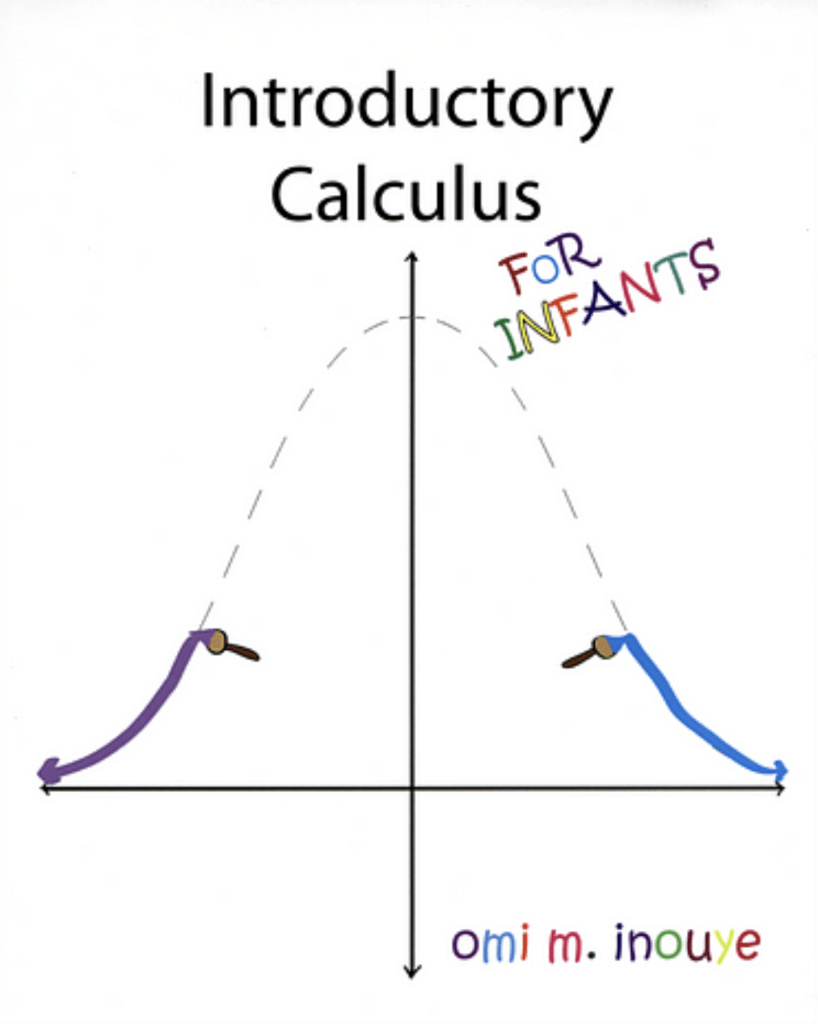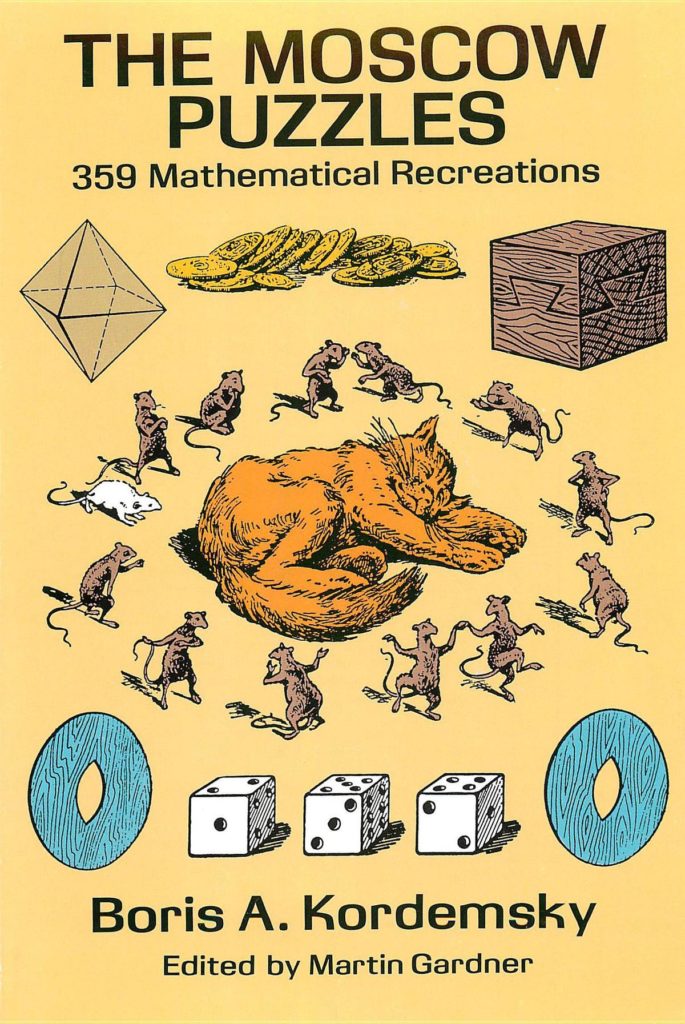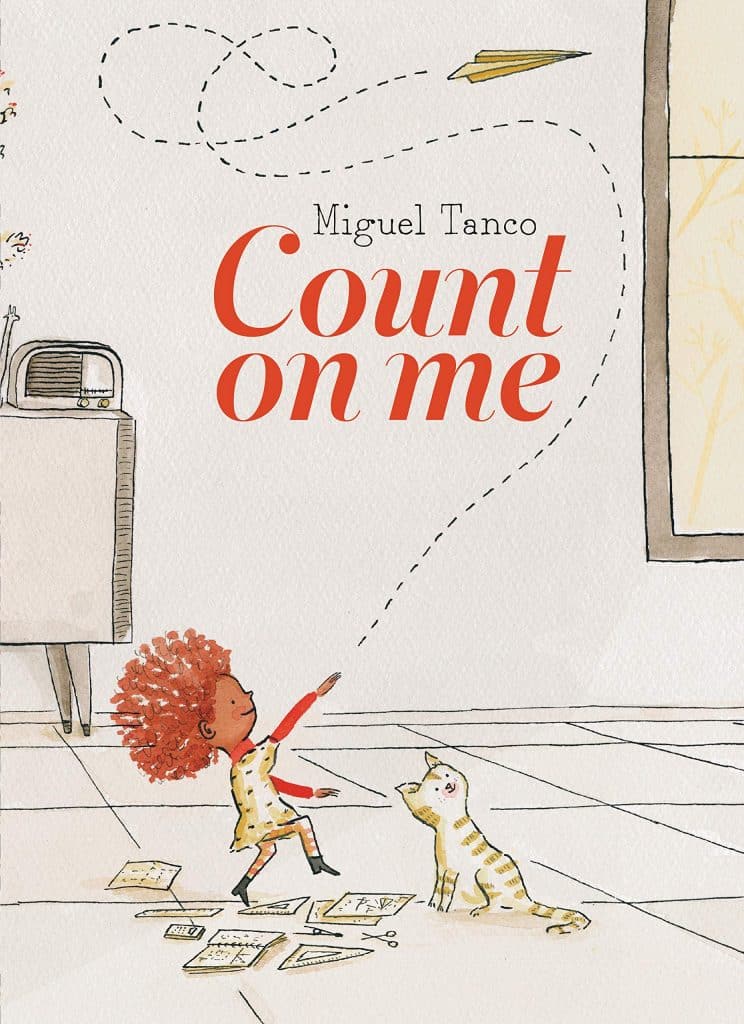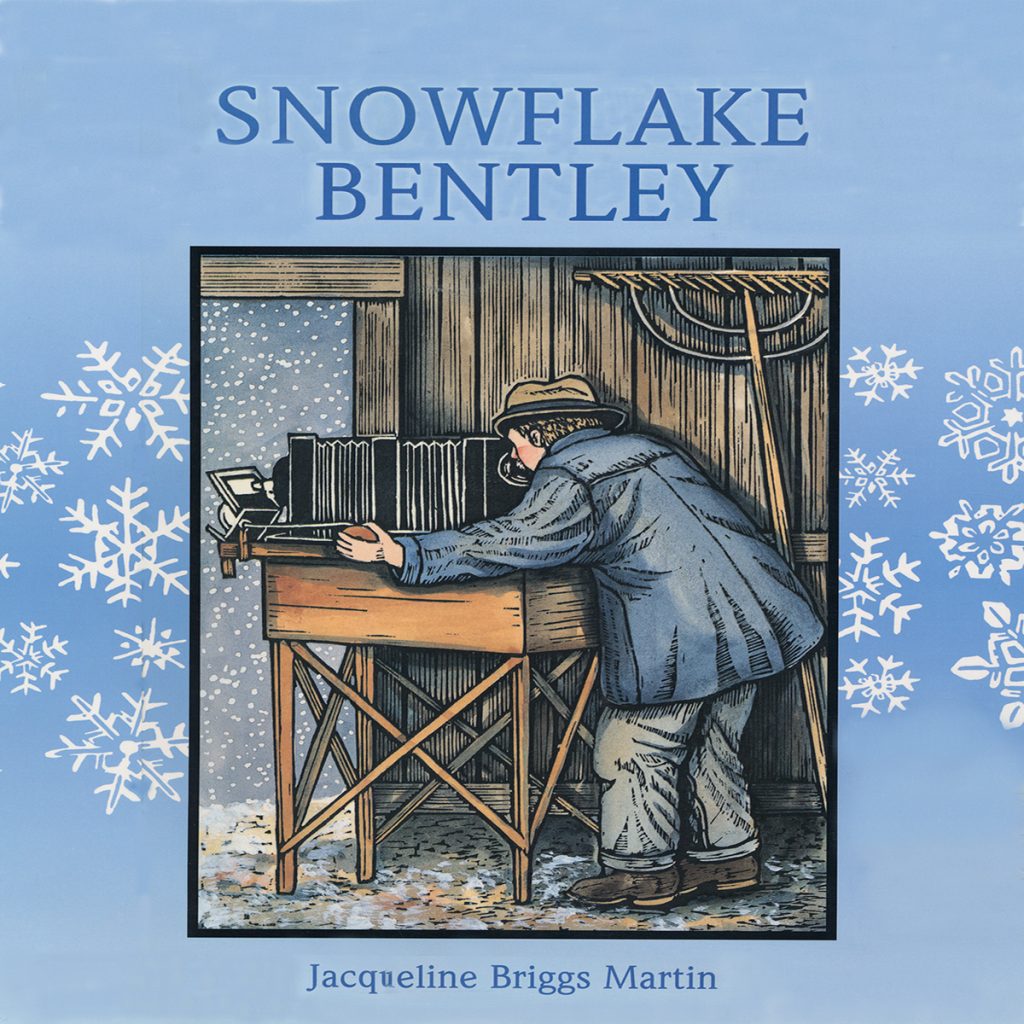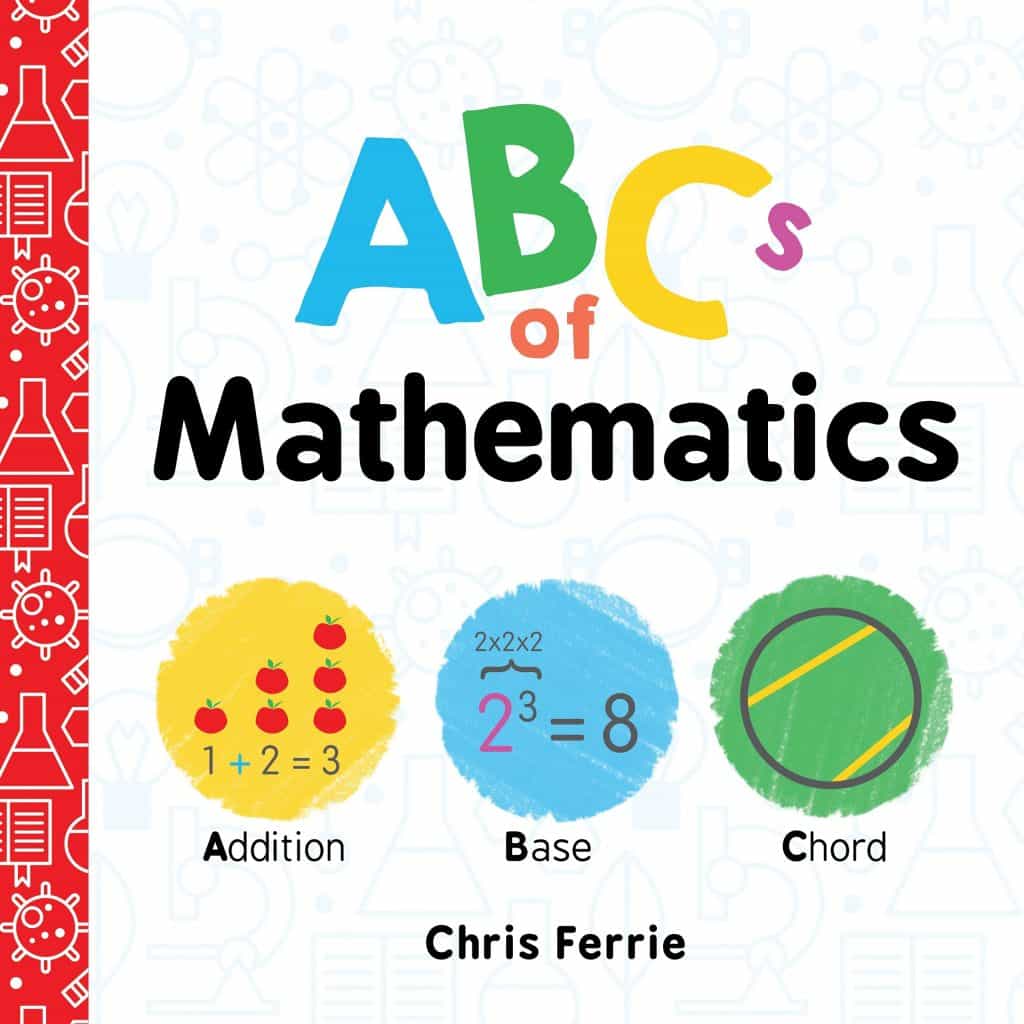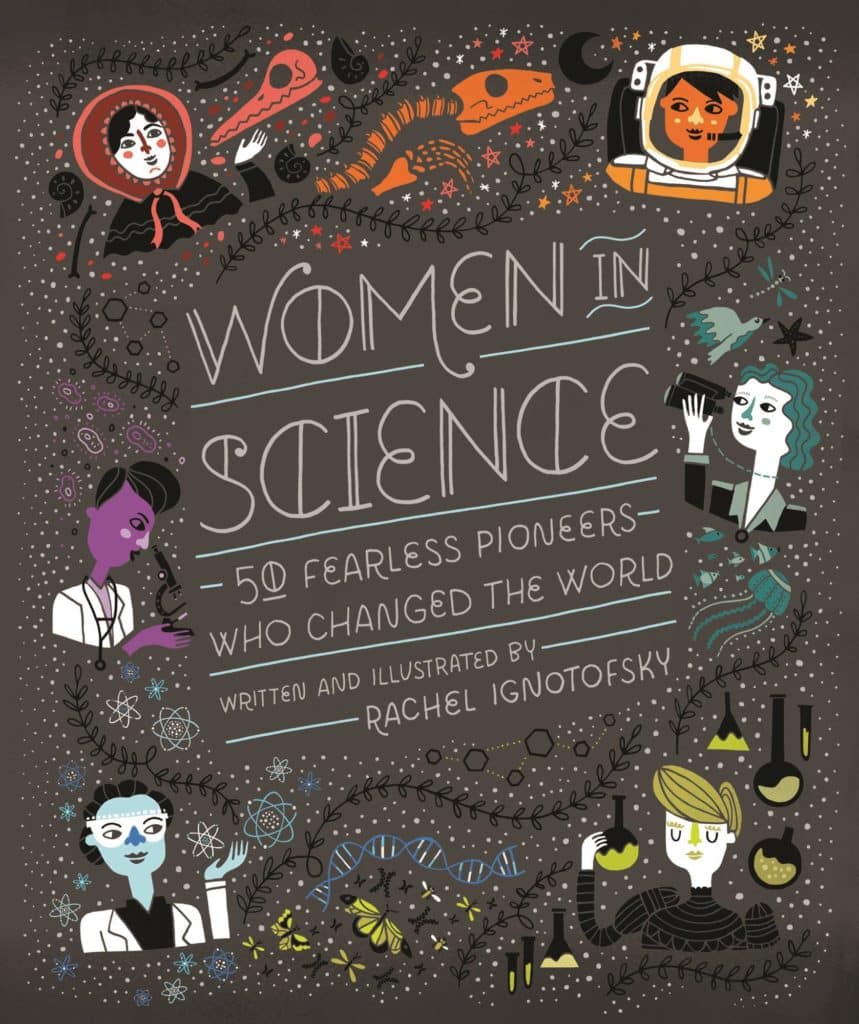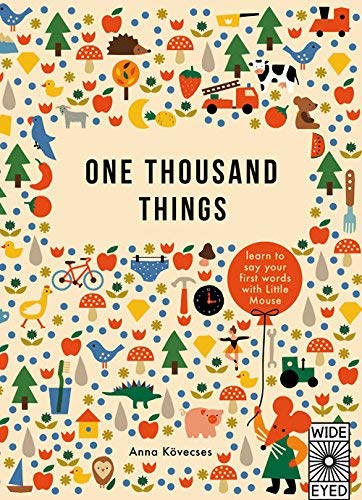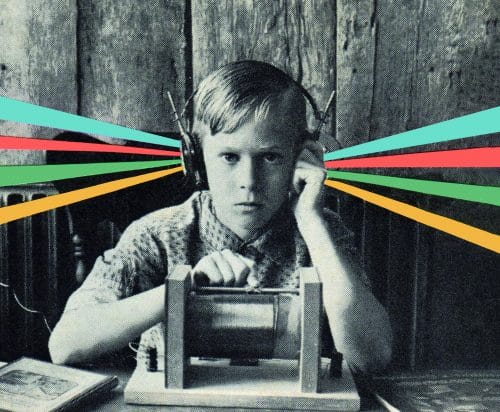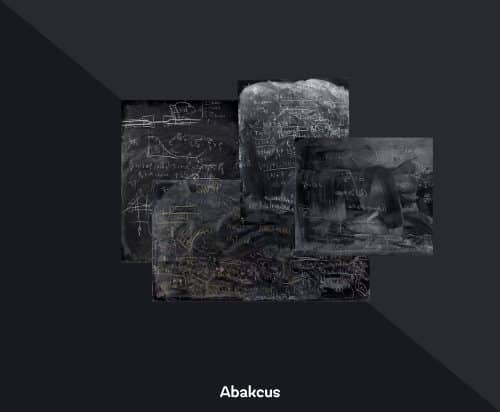You need to purchase math books for children. For a child’s education to be successful, mathematics must be a priority both now and in the future. On the other hand, when do children begin to investigate the vital subjects of mathematics? The path of curiosity, exploration, and discovery probably starts when a child tastes and feels the texture of an object they have put in their mouth for the first time.
It is because math is all around us. It’s in the patterns of nature, the shapes of our homes, and the way our devices work. Math is marvelous, but understanding mathematical concepts can be challenging for kids. But, what’s a great way of learning to love math at an early age? Of course, it’s with books! If you don’t believe me, you should check out this research, Children with More Books at Home Have Less Mental Decline When Older.
Why Math Books for Children are Important for Education?
Picture math books for children are an excellent cross-curricular tool for introducing children and students to difficult topics in mathematics. The following math books for children selection will enhance your collection while inspiring your children’s imaginations. They are filled with great stories and cool project ideas that can help lay a foundation for any mixture of STEM disciplines. In some of these math books for children, math is key to the plot; in others, the characters have a knack for math.
I hope the math books for children selected here will pique your children’s interests, teach them something new, and make mathematics more accessible.
Calculus is a complicated branch of mathematics that most people associate with college-level courses. However, Omi M. Inouye’s book, “Introductory Calculus for Infants,” challenges this assumption by introducing calculus concepts to babies. The idea behind the book is to give children a head start in STEM fields by teaching them math concepts early on.
Inouye’s book contains simple illustrations and explanations that break down complex calculus concepts such as limits, derivatives, and integrals into easy-to-understand terms for infants. The author argues that since babies are naturally curious and eager learners, they can absorb mathematical concepts more easily than older children or adults. By starting early, she believes parents can set their children up for success in the future.
One example of how Inouye introduces calculus is through the concept of limits. She explains how a baby reaching for an object just out of reach is actually trying to calculate the distance between themselves and the object – without even realizing it! By framing everyday actions in mathematical terms, Inouye hopes to create an engaging learning experience for infants.
While some may question the practicality of teaching calculus to babies, others argue that early exposure to challenging concepts is beneficial for cognitive development. Research has shown that exposing young children to complex ideas can improve their problem-solving skills later in life. Additionally, providing a foundation in math at an early age can help reduce math anxiety and increase confidence when it comes time for formal education.
However, not everyone agrees with Inouye’s approach. Critics argue that infants should be focusing on socialization and language acquisition rather than abstract mathematical concepts. Additionally, there are concerns about the potential for burnout – if children are exposed to advanced math too early, they may lose interest or become overwhelmed by the subject.
“Introductory Calculus for Infants” is not your typical children’s book. It challenges traditional assumptions about what infants are capable of learning, and offers a unique approach to introducing complex mathematical concepts. While it may not be for everyone, parents interested in giving their child a head start in STEM fields may want to consider adding this book to their library.
Ultimately, whether or not teaching calculus to babies is helpful will depend on individual parenting styles and the unique needs of each child. However, Inouye’s book provides an interesting glimpse into a new trend in early childhood education that is worth exploring further.
In the bustling literary world, children’s picture books often craft the tales of imagination, wonder, and the power of discovery. “On a Beam of Light” by Jennifer Berne, sweetly accompanied by Vladimir Radunsky’s artwork, sidesteps the average storybook and dives deep into the past of one of the world’s most renowned geniuses, Albert Einstein, to reveal that every journey of discovery has humble beginnings. The narrative teaches young minds and reminds adults that it is not just knowledge but questions and uninhibited curiosity that drive real understanding.
“In the year that Einstein was born, 1879, the electric light bulb was not yet a household item. Cars and airplanes were still just a dream, and the atoms that we are all made of were a mystery.” This captivating introduction invites readers into a world on the brink of unimaginable innovation, with a baby Einstein poised to contribute his share of the stars. It continues to narrate a most curious child, silent with strangers, yet bubbling with an inner universe of thoughts. His first encounter with a compass underlines the essence of his life’s work—understanding those invisible forces that guide our world.
Einstein’s fascination with the compass leads him to question the source of the needle’s unwavering direction. In his mind’s eye, he is already on a beam of light, racing alongside these invisible rays to understand the Sun’s secrets. It’s a testament to the book‘s ability to capture the essence of childhood curiosity—an open heart to the world’s marvels.
The Poetry of Numbers and Silenced Curiosity
Entering school, Einstein is confronted with authority that does not appreciate the depths of his inquiries. He is told to follow the curriculum and relinquish his persistent questioning. Yet, as “On a Beam of Light” illustrates, the young Einstein refuses to be molded into someone he is not, much like the particles he’d one day study—always in motion and unstoppable.
Despite being labelled slow and simple-minded by teachers, Einstein’s love affair with numbers becomes his solace. He unravels the poetry within their patterns, foreseeing the lyrical beauty in their logic—another thematic magnification of the book‘s core message: the importance of looking beneath the surface, questioning and listening to one’s inner voice.
The Solitude of Brilliance
Einstein’s journey to his general theory of relativity was a solitary one. After he leaves school and at odds with traditional academics, he finds work at a patent office, a seemingly mundane role. Yet, it is this solitude that nurtures the brilliance behind Einstein’s most revolutionary thoughts. His mind becomes a kaleidoscope of hypothetical scenarios, all due to that one moment with a compass in his hand.
The book portrays this time in his life with nuance, illustrating that sometimes stepping out of the limelight can be the spark we need to ignite real innovation. Radunsky’s illustrations accompany the narrative beautifully, allowing the reader to almost overhear the synaptic crackling that indicates another grand idea is in formation.
Einstein’s True Measure: The Unanswered Questions
While “On a Beam of Light” ends almost poetically with the acknowledgment of Einstein’s death, it does so with an important but subtle message. His true measure, perhaps, is not in the theories he exhaled into the world but in the questions he left for future minds. Einstein bequeathed us with intellectual puzzles to unravel, trails of light to continue chasing, and a mantle of curiosity to carry forward.
This final narrative embellishment not only honors Einstein’s legacy but it prompts the reader. Each of us holds the potential to craft our story and leave an indelible mark in the grand narrative of knowledge. “On a Beam of Light” is a celebration of a life lived intensely and questions asked fearlessly.
Fostering Young Minds: A Path to Einstein’s Story
The value of “On a Beam of Light” extends beyond its eloquent retelling of Einstein’s early life. It encapsulates a lesson vital for educators and parents—to foster an environment that encourages inquiry and honors the unique path of each child’s intellect. Its pages resonate with the inner child in every adult, calling them to remember the awe of a first discovery or the satisfaction of an answered “why.”
The illustrations, too, play a pivotal role on this journey. They are more than mere visual companions—they are guides through the labyrinth of Einstein’s mind. A playful mix of wit and art, they underscore the idea that insights and inspiration can come from the most unexpected places.
For educators, “On a Beam of Light” is a resource not only for storytelling but for planting the seeds of perseverance and the drive for understanding. And for parents, it is a subtle reminder that in a child’s laughter or in a seemingly simple question might reside the future’s solutions.
Diving into the Cosmic Pool of Curiosity
In a world that often prizes answers, “On a Beam of Light” encourages the celebration of the question. It teaches children that in the very act of wondering lies the key to unlocking life’s greatest mysteries. It implores educators to cultivate not only a generation of knowledge bearers but a clan of undeterred thinkers.
Berne’s narrative expertise and Radunsky’s tender illustrations are in perfect harmony, their voices joining in a crescendo that resonates with the sound of a child’s laughter in the hallways of academia. Together, they deliver a tale that’s as much an instruction manual for the curious mind as it is a love letter to the future. And just like the man himself, the book embodies the spirit that true intelligence does not reside in knowing everything but in realizing there is everything to know.
Conclusion: “On a Beam of Light” as an Ongoing Narrative
Reading “On a Beam of Light” is not a passive activity. It is an adventure—pacing the floors of an intellectual home, turning the pages of history that not just document moments but transcend them into legends. It brims with life lessons; not the pedantic kind but the sort that whispers in one’s ear, giving every person who encounters it the courage to light up their own path.
As the last page turns, an enlightened phrase hangs in the air: “Learn from yesterday, live for today, hope for tomorrow. The most important thing is not to stop questioning.” In the universe, the echoed laughter of a boy who dared to ponder without bounds still reverberates.
Educators and parents, take note: “On a Beam of Light” is not just a story of a past shining luminary but a lantern guiding the way for the curious minds of the future. It is a testament to every child who ever wondered and a celebration of those who decided to pursue the unknown.
Ultimately, “On a Beam of Light” transcends the narrative of Albert Einstein’s childhood into a universal anthem for the lively spirit that resides within all children and, when nurtured, can light the most incredible journeys.
“Simply put, this is the best and most popular puzzle book that has ever been published in the territory formerly known as the Soviet Union. Since it was published for the first time in 1956, there have been a total of eight editions of it, in addition to translations from the original Russian text into Ukrainian, Estonian, Lettic, and Lithuanian. Only the Russian language edition has been published, but it has already sold almost a million copies.
The book contains a fantastically diverse assortment of brainteasers, ranging from easy “catch” riddles to challenging problems, which is one of the reasons why it has been so successful (none, however, requires advanced mathematics). The Western readers will find that many of the puzzles are brand new, while some of the more common problems have been recast in a new light. Most of the time, the riddles are told in the form of endearing stories that offer readers who are not fluent in important Russian insights into the way of life in modern Russia as well as its traditions. In addition, Martin Gardner, formerly the editor of the Mathematical Games Department at Scientific American, has clarified and simplified the book to make it as easy as possible for an English-reading public to comprehend and enjoy. In addition to this, he has ensured that nearly all of the original work’s vivacity, warmth, and humor have been preserved through his careful efforts.
This low-cost edition of the first English translation is lavishly illustrated with over 400 clear diagrams and humorous sketches, and it will provide weeks or even months’ worth of stimulating entertainment. It should be in the collection of any puzzle enthusiast or a person who enjoys recreational mathematics.”
Don’t you just love it when a good story intertwines with your passion, driving you to explore the intertwining paths of creativity and knowledge? If you are a fan of mathematical fiction and yearn for a narrative that makes the world of math not only accessible but whimsical, you’ll be thrilled by Eugenia Cheng’s “Molly and the Mathematical Mystery.”
In a world where numbers breathe, dance, and hide in plain sight, Cheng’s book, Molly and the Mathematical Mystery takes young adult readers on a joyous journey through the puzzles of prime numbers, the labyrinths of logic, and the interconnected threads of shapes. But it isn’t just a simple math lesson in the disguise of a story; it’s a gripping narrative that highlights the beauty and allure of mathematics.
A Math-Infused Tale: What Is “Molly and the Mathematical Mystery” All About?
At its heart, “Molly and the Mathematical Mystery” is a celebration of math, disguised as an adventure for its young and curious readers. The book centers on Molly, a young girl who moves to a new town and school, feeling isolated and different. However, her encounter with a hidden and mysterious library sets her on a quest to prove herself and unravel secrets that could change everything.
Molly doesn’t possess supernatural powers or high-tech gadgets. Her tool is her intellect, her courage, and her love for math. As she navigates the challenges within the book, Molly finds kindred spirits—fellow students and even historical mathematical figures—who guide her through puzzles and assist in her pursuit of understanding.
Cheng’s book, Molly and the Mathematical Mystery, is much more than a coming-of-age story. It’s a depiction of the math that lurks behind our world and an affirmation that math can be thrilling.
Making Math Fun and Accessible
The greatest triumph of “Molly and the Mathematical Mystery” lies in its ability to make math enjoyable, even for those who shy away from the subject. Cheng gracefully weaves topics like the Sieve of Eratosthenes or the Enigma machine into the plot, taking care to ensure they serve the storytelling rather than stifle it with hard facts.
Through engaging characters and an immersive narrative, Molly and the Mathematical Mystery imparts knowledge about numbers and reasoning structures that are both fundamental and, dare we say, fun. It’s clear that Cheng, a renowned mathematician in her own right, is not interested in simply parading her expertise. Instead, she chooses to share the joy she finds in her field, and passes this energy on to her readers with ease.
A key takeaway is the democratization of mathematics. Cheng believes that everyone can—and should—engage with mathematical thinking. Her book speaks to this belief, fostering an environment where every reader can be a solver and every problem is just another riddle waiting to be tackled.
Demystifying Math: Less Intimidation, More Exploration
Mathematics often carries a reputation of being daunting, a subject that weeds out the weak-minded. “Molly and the Mathematical Mystery” actively challenges this notion, illustrating that understanding numbers is more about approach and perspective than inherent ability.
Cheng’s characters—both human and numerical—emphasize that the way you look at a problem can be more important than the right answer itself. They engage in guesswork, creative strategies, and reformulate their inquiries when a roadblock appears, echoing insights of the mathematical process in a palatable and relatable way.
For most young readers, Molly and the Mathematical Mystery poses a powerful argument: mathematics can be an adventure to be relished rather than a chore to be endured. Each challenge Molly faces is another opportunity for growth and learning, inviting readers to adopt a similar mindset in their own encounters with the subject.
Embracing Problem-Solving as an Adventure
Molly and the Mathematical Mystery infuses a sense of excitement around the very act of problem-solving. Each new equation or puzzle isn’t just another academic exercise; it’s a gateway to a wider understanding and new adventures. “Molly and the Mathematical Mystery” teaches its readers that, through tackling problems, one can unlock doors to worlds both real and imaginary.
Moreover, the narrative encourages the reader to perceive the world through mathematical lenses, sharpening their ability to recognize the patterns and connections that govern our environment. Cheng illustrates that the beauty of math is all around us and that, with the right approach, we can convert any challenge into an opportunity for discovery.
The Perfect Blend: Storytelling, Illustration, and Design
The design of the book is as intentional as its content, with illustrations and layouts that complement the narrative and help immerse the reader in the world of numbers. Visual learners and young audiences are especially well-catered for, with diagrams and visual aids that not only clarify but also add depth to the storytelling experience.
The illustrations serve as a bridge, capturing the essence of geometric shapes or the logic of puzzles, enhancing the understanding of the text. They are neither unnecessary nor overpowering but perfectly balanced, adding to the charm of the story without burdening it with unnecessary weight.
A Conclusion Grounded in Adventure and Wisdom
In a world flooded with technology and fast-paced media, an old library and a mathematical mystery offer refreshing deviation. “Molly and the Mathematical Mystery” is more than just a story—it’s an invitation to pause, to think, and to accept the treasures and challenges that the subject of mathematics presents.
Cheng’s writing style is approachable and charming, engaging the reader in such a way that concepts, which once may have seemed dry or distant, spring to life with color and adventure. It stands as a testimonial to the possibilities when we allow creativity to guide our approach to areas traditionally viewed as mundane.
In the end, Molly and the Mathematical Mystery‘s greatest achievement is to instill in its readers a sense of optimism in the face of problems. It teaches that, in every mystery, there is a mathematical undercurrent—a set of principles at work, waiting to be uncovered.
For the young and the young at heart, “Molly and the Mathematical Mystery” champions a new generation of thinkers and problem-solvers—each one poised to take on the world with a smile, a head full of numbers, and the wisdom that an enigma is nothing to be feared but a joy to be encountered.
As we close the final chapter on Molly’s adventure, it’s hard not to feel that our own journey with mathematics has just begun—a journey filled with joy, anticipation, and, most importantly, endless possibility.
Eugenia Cheng’s work doesn’t merely introduce mathematical concepts; it acts as a catalyst for a love affair with logic and numbers. For any YA reader or adult looking to rediscover the enchantment of pure reasoning, this book stands as an unmissable read. So, are you ready to step into the shoes of Molly and venture into a world where the answers aren’t just numbers but threads in the tapestry of understanding?
In a literary world where numbers are often the villains of the imaginative, Miguel Tanco’s “Count on Me” turns the tables, transforming math into a hero. The story follows a young girl as she embarks on a journey to discover her passion and finds an unexpected ally in the world of numbers. From start to finish, Tanco weaves a heartwarming narrative that celebrates the beauty of math and the individual pursuit of excellence.
A Celebration of Everyday Mathematics
The true beauty of “Count on Me” lies in its ability to depict the subject of mathematics not as an abstract concept, but as a vital and engaging part of everyday life. For young readers, this message is paramount, especially for those who might not resonate with traditional tales. Tanco’s whimsical illustrations bring both the girl’s world and the mathematics she loves to life, inviting children to see the equations hidden within their routines and environments. It’s an invitation to appreciate the patterns, shapes, and numerical reasoning that underpin the very fabric of life.
Diversity and Representation
In addition to its numerical spotlight, “Count on Me” stands as a beacon for diversity in children‘s literature. The interracial family at the heart of the story presents a relatable and inclusive example for readers, showcasing the universality of familial love and support. Tanco thoughtfully incorporates diverse representation, offering a reflection of the multi-hued world in which young readers live. It’s a salient reminder that the fascination with numbers knows no bounds, respecting neither race nor gender.
Artwork That Speaks Volumes
The artwork of “Count on Me” is a marvel to behold. Tanco’s signature style is a testament to his skill and vision, displaying a rich and warm palette that complements the story’s hopeful tone. The inclusion of the main character’s illustrated notebook is not just a charming aesthetic choice but a practical and dynamic teaching tool. For children who are visually inclined, this section serves as an instruction manual for engaging with the numbers and concepts introduced in the book.
In conclusion, “Count on Me” may very well become a cherished addition to a child’s math library. It broadens the horizon of what is possible in children‘s literature by valuing the love of math and encouraging young readers to find and nurture their own passions. Any parent, educator, or young reader who appreciates a good story with valuable takeaways will delight in “Count on Me.” It is a book that counts, indeed.
Snowflake Bentley by Jacqueline Briggs Martin is one of the best kids’ books out there. It takes readers on an inspiring journey through Wilson Bentley’s lifelong obsession with snowflakes, told through beautiful illustrations and poetic language.
His parents encouraged his curiosity and worked hard to provide him with his own camera and microscope. His enthusiasm was misunderstood at the time. On the other hand, Wilson cataloged hundreds of snowflake photographs, gave slideshows of his findings, and published a book of his photos when he was 66. His work became the foundation for everything we know about beautiful, one-of-a-kind snowflakes today.
Parents and children alike will be enchanted by this book’s compelling narrative that explores a man’s commitment to science and his ceaseless curiosity about nature. Snowflake Bentley brings us a true story of discovery, perseverance, and exploration—unparalleled gifts for any child!
This biographical ode to a very special farmer makes an ideal holiday gift or snow day read.
A new mathematical idea, ranging from addition to zero, is presented in a clear and easy-to-understand manner in each of the 26 letters of the alphabet in this colorful and approachable children’s book, ABCs of Mathematics. This mathematical primer was written by an industry professional. Each page has different language levels to ensure the book can develop alongside your budding mathematician as they learn more.
There is no need to continue your search if you are seeking the ideal book on STEAM topics for educators, books on math for infants, or other books on Baby University for your child. Your budding mathematician will have a lot of fun while studying the basics of mathematics with the ABCs of Mathematics.
Women in Science celebrates the achievements of fifty remarkable women in STEM fields. From ancient times to present day, these women have made significant contributions to their fields. Each incredible woman is given a double page spread with a stylised portrait, infoboxes filled with interesting facts, and a page of text outlining her accomplishments and providing a brief biography.
These inspiring women not only made groundbreaking discoveries and advancements, but they also overcame countless barriers. They were often denied access to education and jobs simply because they were women or black in a racially segregated America.
The author, Ignotofsky, has taken care to include a diverse range of women in her book. While the focus is primarily on American women, readers will find a wide variety of nationalities, ethnic backgrounds, orientations, and social classes represented. This ensures that young girls can find someone who looks like them, which is truly wonderful.
What sets this book apart from others is its inclusion of lesser-known women who were equally pioneering and brilliant. While Marie Curie is featured, there are many other remarkable women who deserve recognition.
One standout inclusion is Rachel Carson, known for her environmental classic Silent Spring. Carson was not only a scientist but also a poet. Her work inspired a global environmental movement, making her an influential figure worth celebrating.
Another fascinating addition is film star Hedy Lamarr, who invented a radio frequency spread-hopping method that laid the foundation for GPS, Wi-Fi, and Bluetooth technologies we rely on today. It’s amazing to think that her invention has had such a lasting impact.
Women in Science is not only informative but visually stunning. The illustrations by Ignofotsky, a graphic designer, are captivating and draw the eye. The book is filled with a wealth of information presented in a clear and concise manner. It’s a book that you can spend hours exploring.
I highly recommend Women in Science. It’s a must-read for anyone interested in learning about the remarkable women who have shaped the world of science.
The book has an attractive design and is structured according to a theme. It also contains fully illustrated collections of “things,” each of which is clearly labeled and simple to identify. This compact book with a value-packed 80 pages covers everything from space to the human body to the world around us, bringing a contemporary appeal to a subject that has been studied for a long time.
This book is ideal for parents and guardians to use at home with young children because it contains one thousand first concepts. The vast array of concepts provides hours of opportunities for exploration, education, and enjoyment.
“Find the missing piece of the puzzle with the help of George Cornelius Factor in this exciting mathematical mystery that teaches simplified and reduced fractions while incorporating mystery and humor in equal measure.
George Cornelius Factor, better known by his moniker GCF, makes a solemn promise to recover a missing valuable fraction. GCF creates a device called the Reducer, which is half ray gun and half calculator. This device eliminates the fraction’s disguise by reducing it to its lowest common denominator and exposing its true form. Knowing that the villainous Dr. Brok likes to conceal the illegal fractions he obtains, GCF creates the Reducer. George goes looking for Dr. Brok in the hopes of recovering the missing fraction. He already has the Reducer in his possession.
The back matter provides additional information on simplifying fractions, also known as reducing them.”


